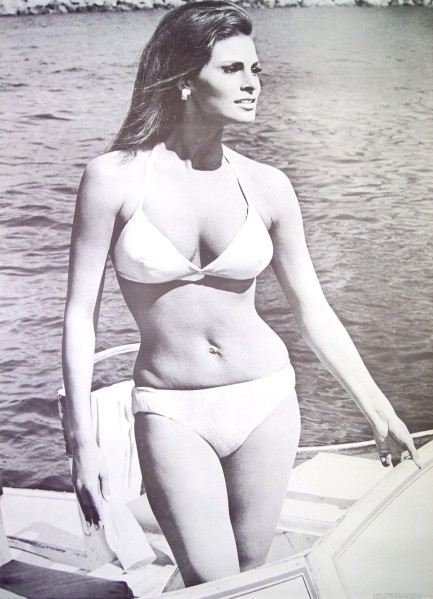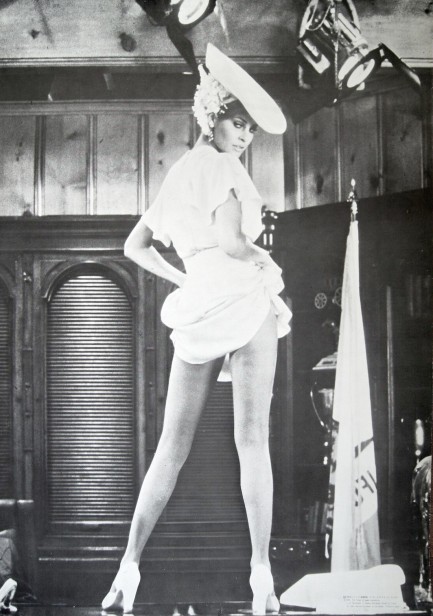 Raquel makes everyone a little bit happier. 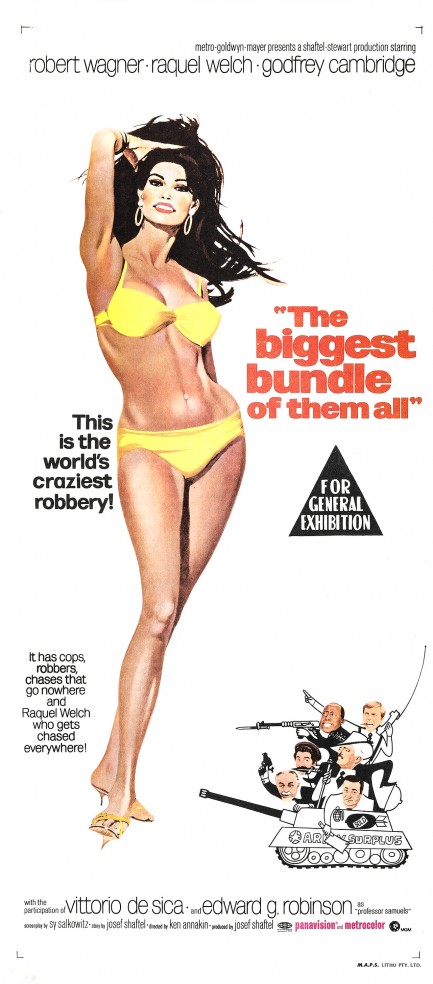
There's no discussion of mid-century cinema without Raquel Welch. She burst onto the scene in 1964 mainly on television, but by 1966 was a major silver screen presence. She was far more famous than the quality of her films would otherwise have warranted, but her beauty and bod helped make her a superstar. The above poster for The Biggest Bundle of Them All is an example of what movie studios usually sold: Raquel with a smile, preferably in a bikini. This promo was painted by Robert McGinnis in his trademark elongated style, and you see the naked art below, reversed from the poster but in its original orientation. Often the only available versions of these vintage pieces contain graphics, inextricable except by enterprising modern people using Photoshop or Gimp, but clean McGinnis originals survive for quite a few of his commissions, making his artistic ability all the more evident. You can see examples here and here, as well as on this website dedicated to him. We talked about The Biggest Bundle of Them All a while back. Shorter version: Raquel drives Italy wild. It premiered in the U.S. today in 1968. 
 Welch proves indispensable to yet another ’60s caper flick. 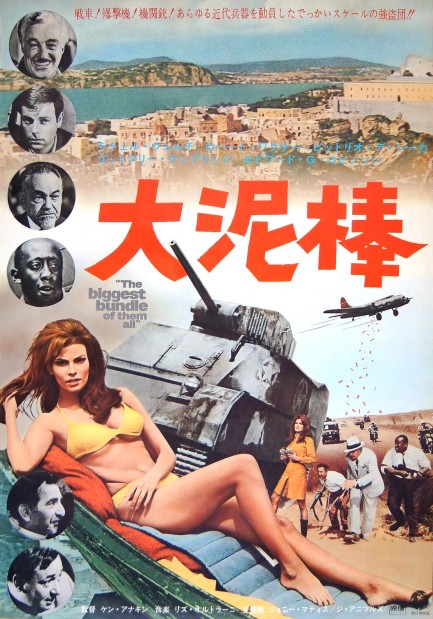
Above you see a promo poster for 大泥棒, or “Great Thief,” made for the 1968 Raquel Welch/Robert Wagner caper flick The Biggest Bundle of Them All. The U.S. poster was painted by master illustrator Robert McGinnis, but we decided to show you the Japanese art instead because it's rare. There are two more Japanese promos below that are also rare. We'll get to the McGinnis version later. In the film, Wagner and his henchmen kidnap an elderly Italian gangster played by Vittorio De Sica and hold him for ransom. Problem is he has no money. At first they don't believe him, but when it finally becomes clear he's broke, Wagner and Co. try to cut bait. But De Sica is terrified all Italy will find out he couldn't pay his own ransom. His reputation would be ruined. So he convinces his kidnappers to join him in a swindle that will maintain his reputation, make him rich again, and earn the kidnappers more money than they ever imagined. De Sica becomes the boss of his own abductors.
For a crime-comedy, it's an ingenious premise, which makes it a shame it wasn't original. Another movie with an almost identical plot called The Happening was in production at Columbia, and when the studio got wind of The Biggest Bundle of Them All it threatened to sue. Metro-Goldwyn-Mayer agreed to give Columbia a cut of Bundle's profits and a legal bloodbath was avoided, but in the same way De Sica's big caper doesn't exactly play out perfectly, Bundle's profits didn't blow the roof off MGM headquarters as planned. And no wonder. It wasn't just the script that wasn't original—the film falls into the same category as continental crime capers like Charade, To Catch a Thief, and Topkapi, and those make for crowded and treacherous cinematic waters. Bundle isn't sophisticated enough, or exciting enough, or infused with enough sexual chemistry to compete with better films of its ilk.
Speaking of sexual chemistry, Welch is naturally the big attraction of any movie she's in, and we've seen enough of her work now to understand that she was more of a persona than an actress during this mid- to late-’60s period. In film after film she basically played herself. Here she smiles and quips and poses, and it's all very Welchian in that groovy way her fans had come to expect—bikinis, lingerie, go-go dancing and all. The movie would be worth far less without her. There are also supporting appearances by Edward G. Robinson and Femi Benussi, while future blaxploitation icon Godfrey Cambridge is one of the kidnappers, so there's plenty for stargazers to enjoy here, but we can't call the movie a success. If you have nothing to do some evening, it might give you a few smiles, but not a bundle of them. After premiering in the U.S. in 1968, The Biggest Bundle of Them All opened in Japan today in 1968.
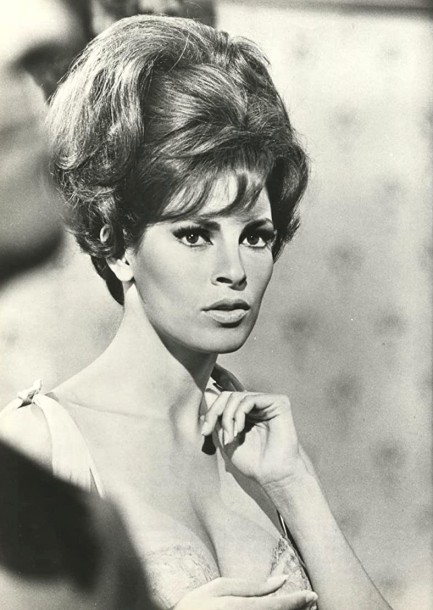 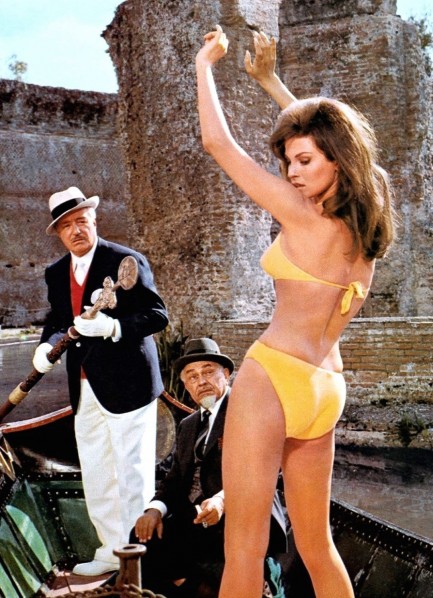 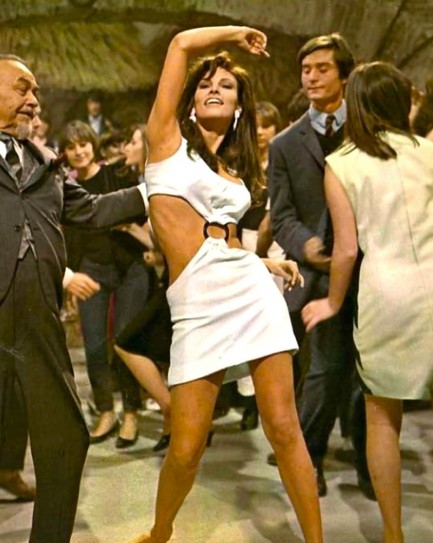 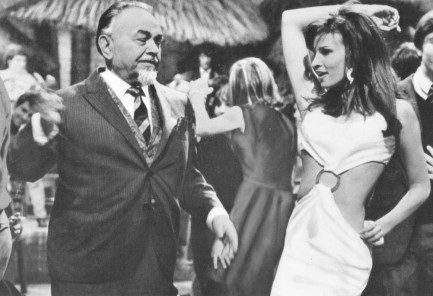 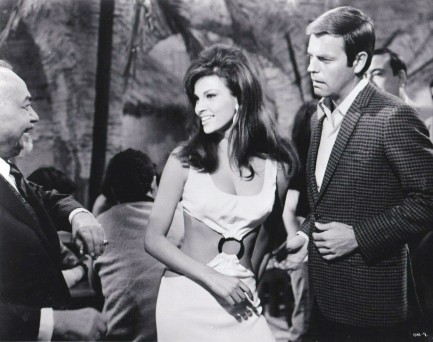 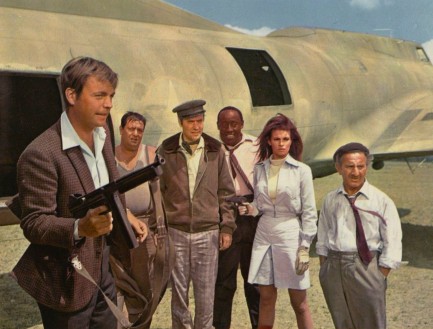 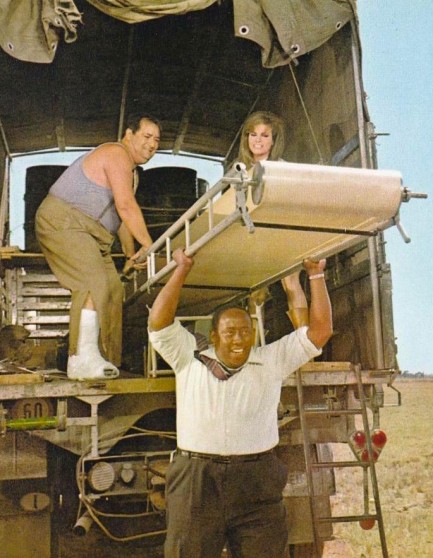 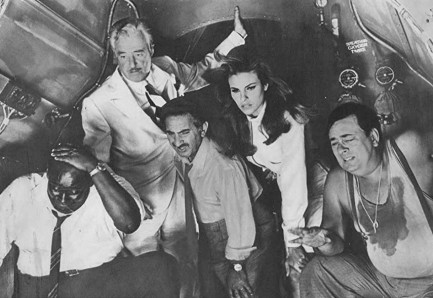 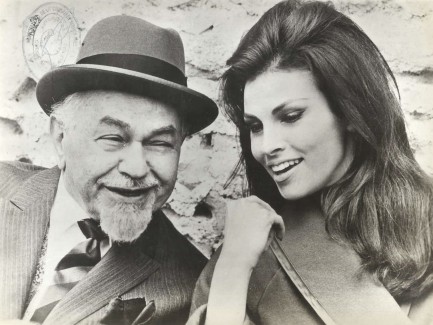 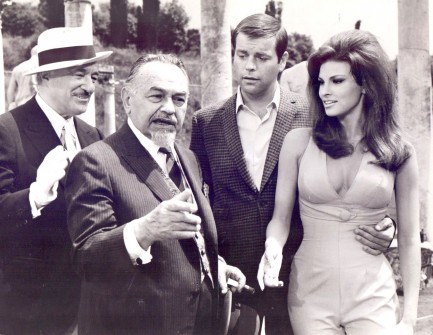 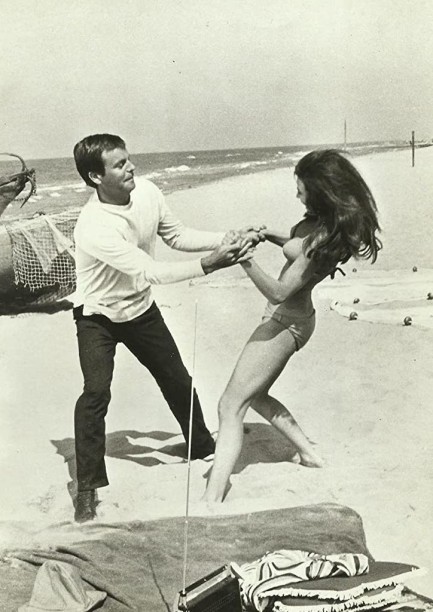 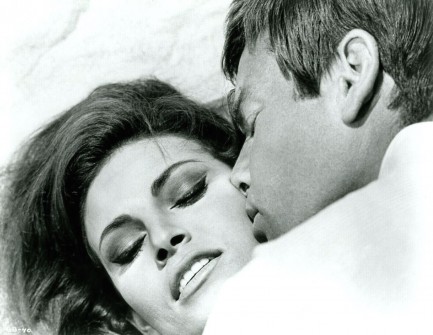 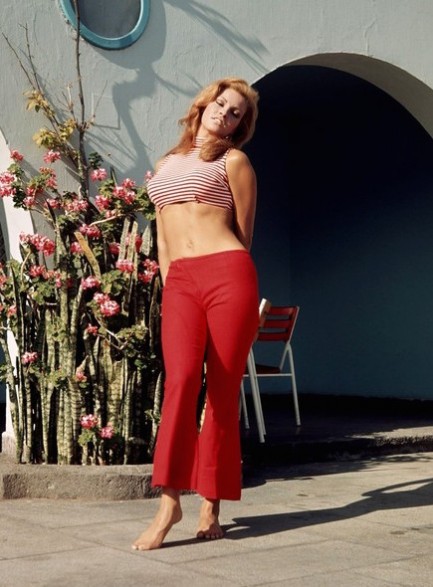 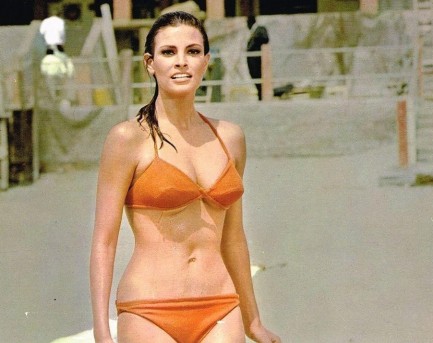 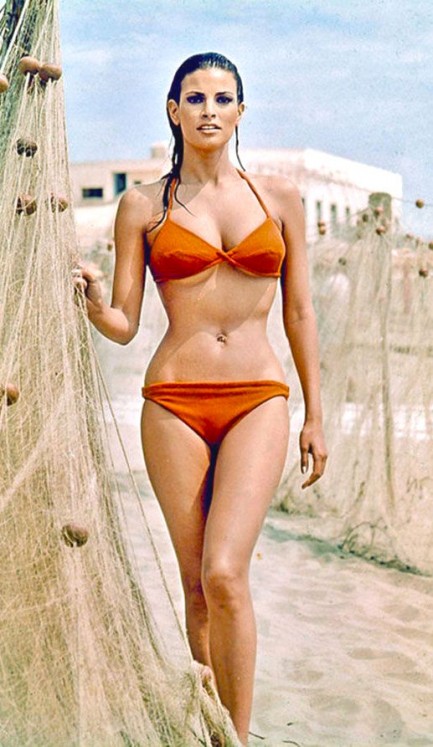 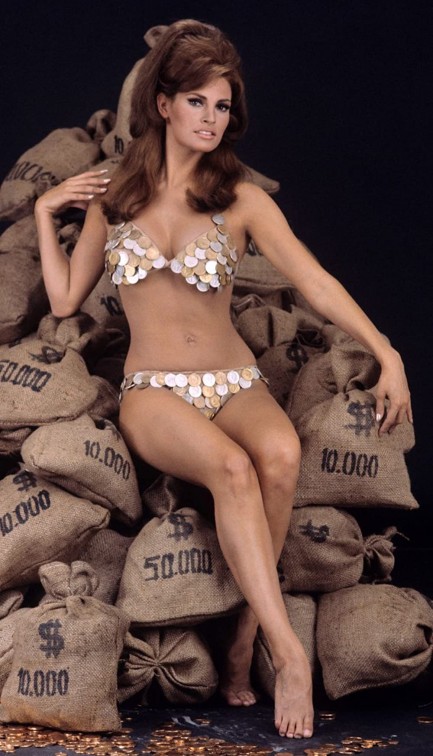 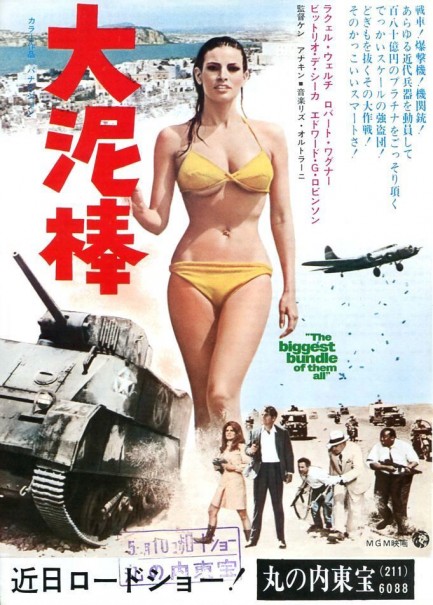 
|
 |

The headlines that mattered yesteryear.
2003—Hope Dies
Film legend Bob Hope dies of pneumonia two months after celebrating his 100th birthday. 1945—Churchill Given the Sack
In spite of admiring Winston Churchill as a great wartime leader, Britons elect
Clement Attlee the nation's new prime minister in a sweeping victory for the Labour Party over the Conservatives. 1952—Evita Peron Dies
Eva Duarte de Peron, aka Evita, wife of the president of the Argentine Republic, dies from cancer at age 33. Evita had brought the working classes into a position of political power never witnessed before, but was hated by the nation's powerful military class. She is lain to rest in Milan, Italy in a secret grave under a nun's name, but is eventually returned to Argentina for reburial beside her husband in 1974. 1943—Mussolini Calls It Quits
Italian dictator Benito Mussolini steps down as head of the armed forces and the government. It soon becomes clear that Il Duce did not relinquish power voluntarily, but was forced to resign after former Fascist colleagues turned against him. He is later installed by Germany as leader of the Italian Social Republic in the north of the country, but is killed by partisans in 1945.
|

|
|

It's easy. We have an uploader that makes it a snap. Use it to submit your art, text, header, and subhead. Your post can be funny, serious, or anything in between, as long as it's vintage pulp. You'll get a byline and experience the fleeting pride of free authorship. We'll edit your post for typos, but the rest is up to you. Click here to give us your best shot.

|
|



